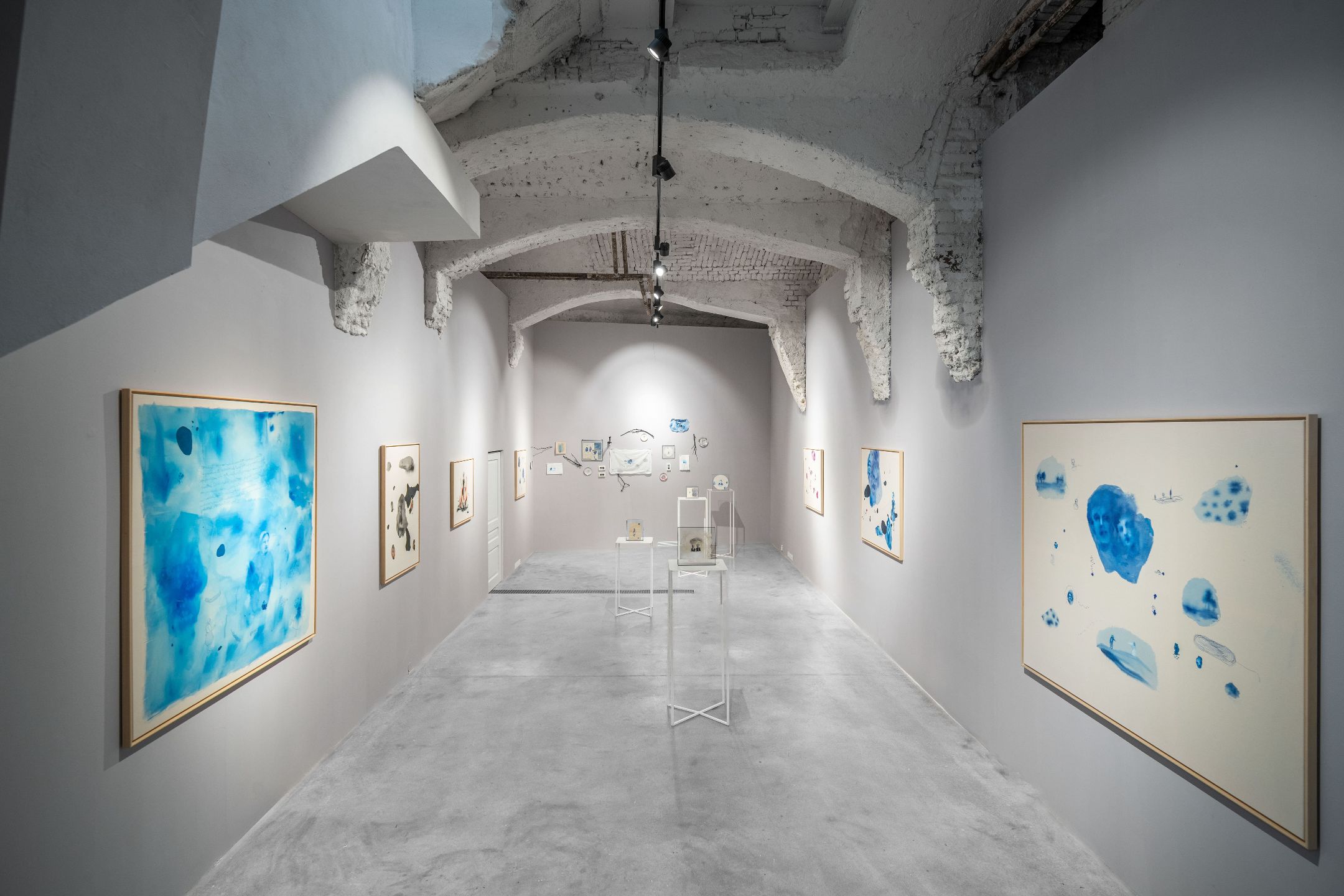
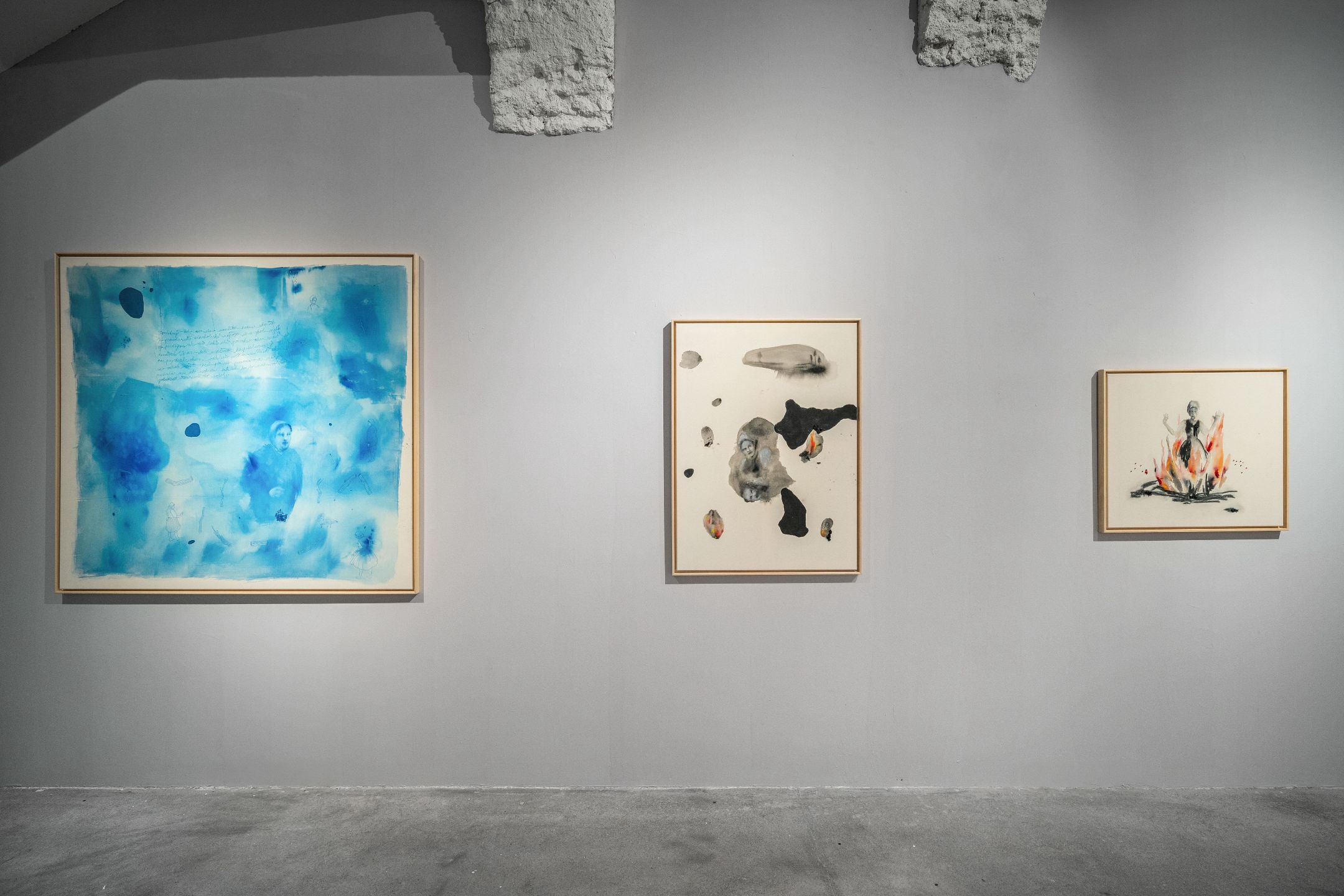
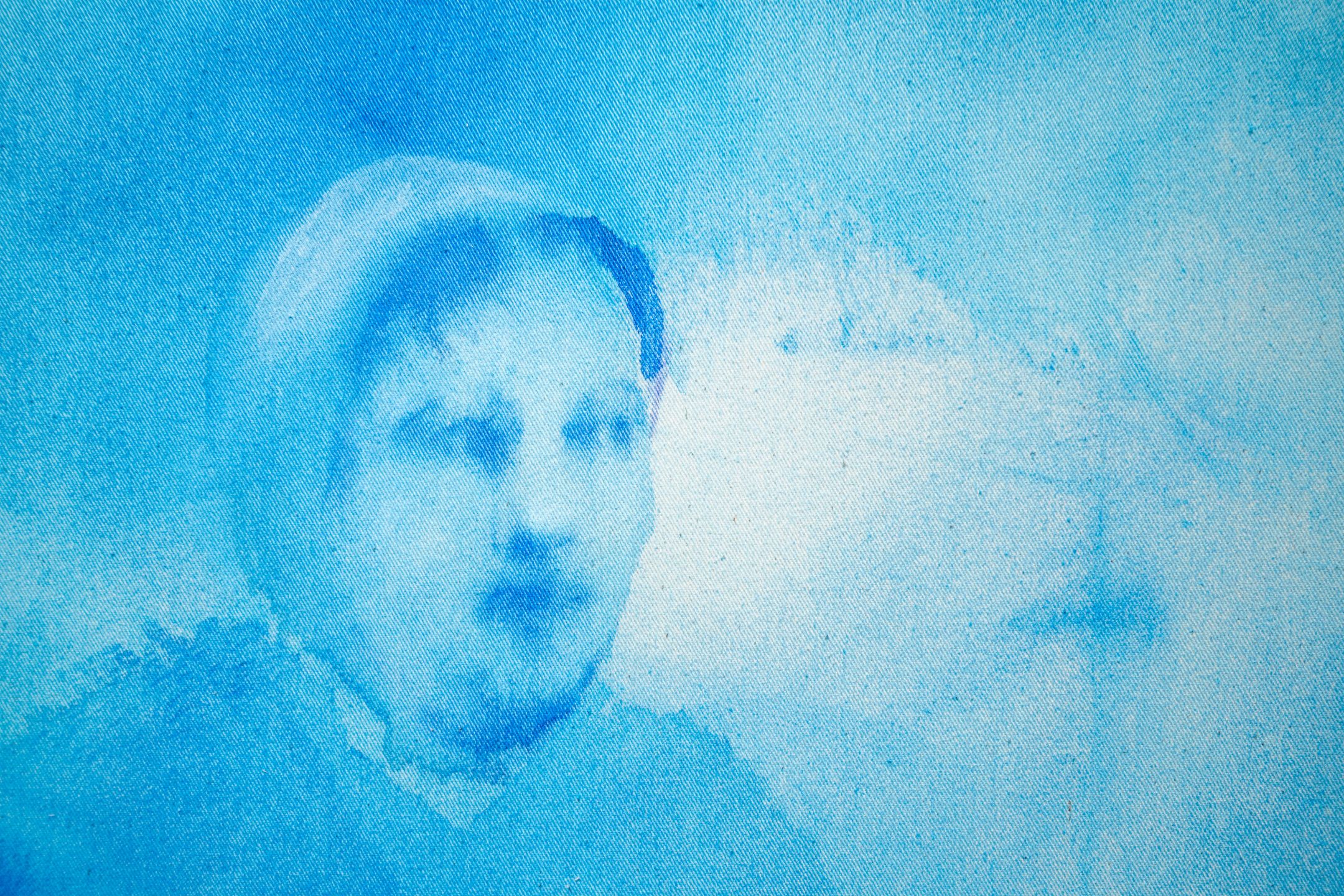
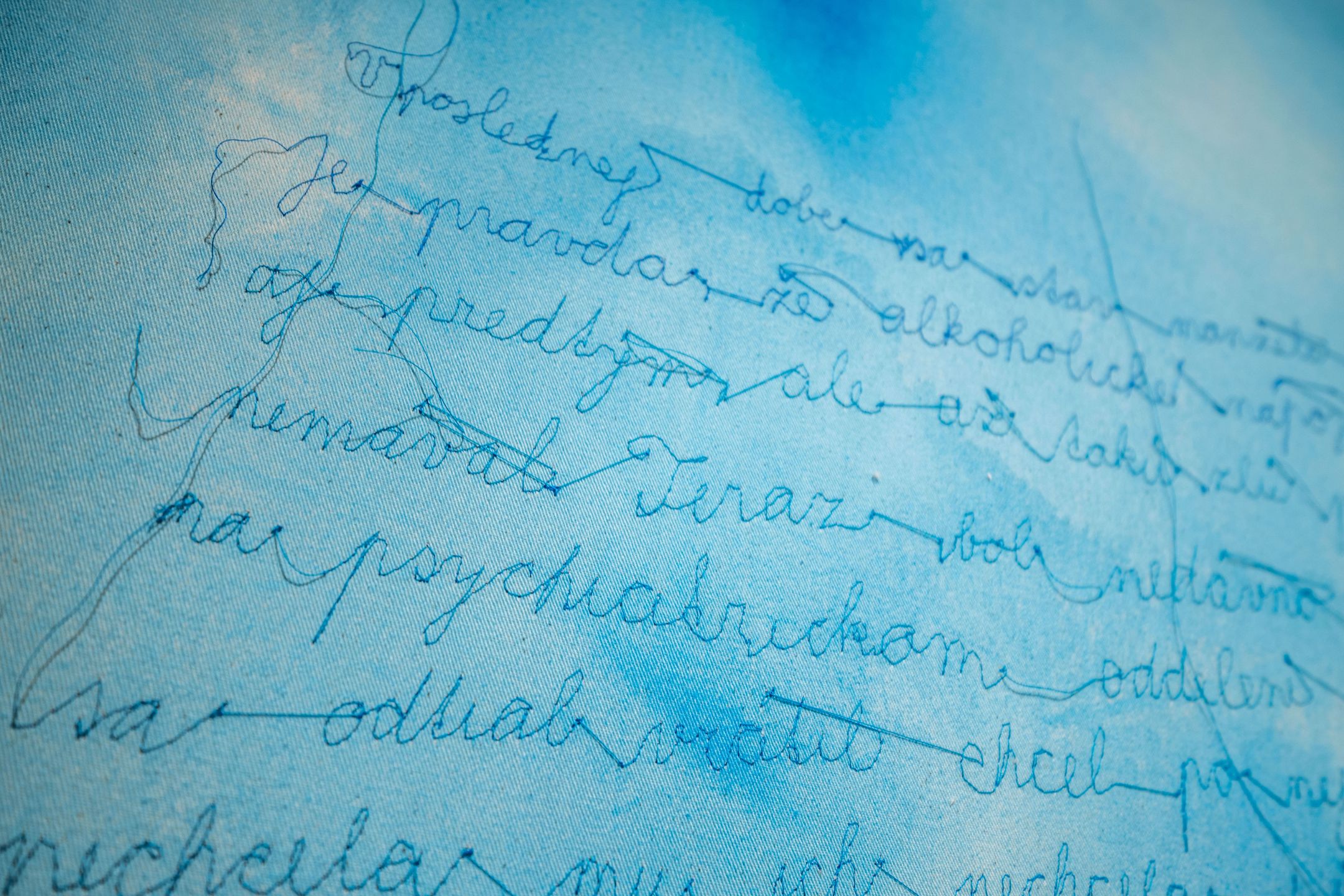
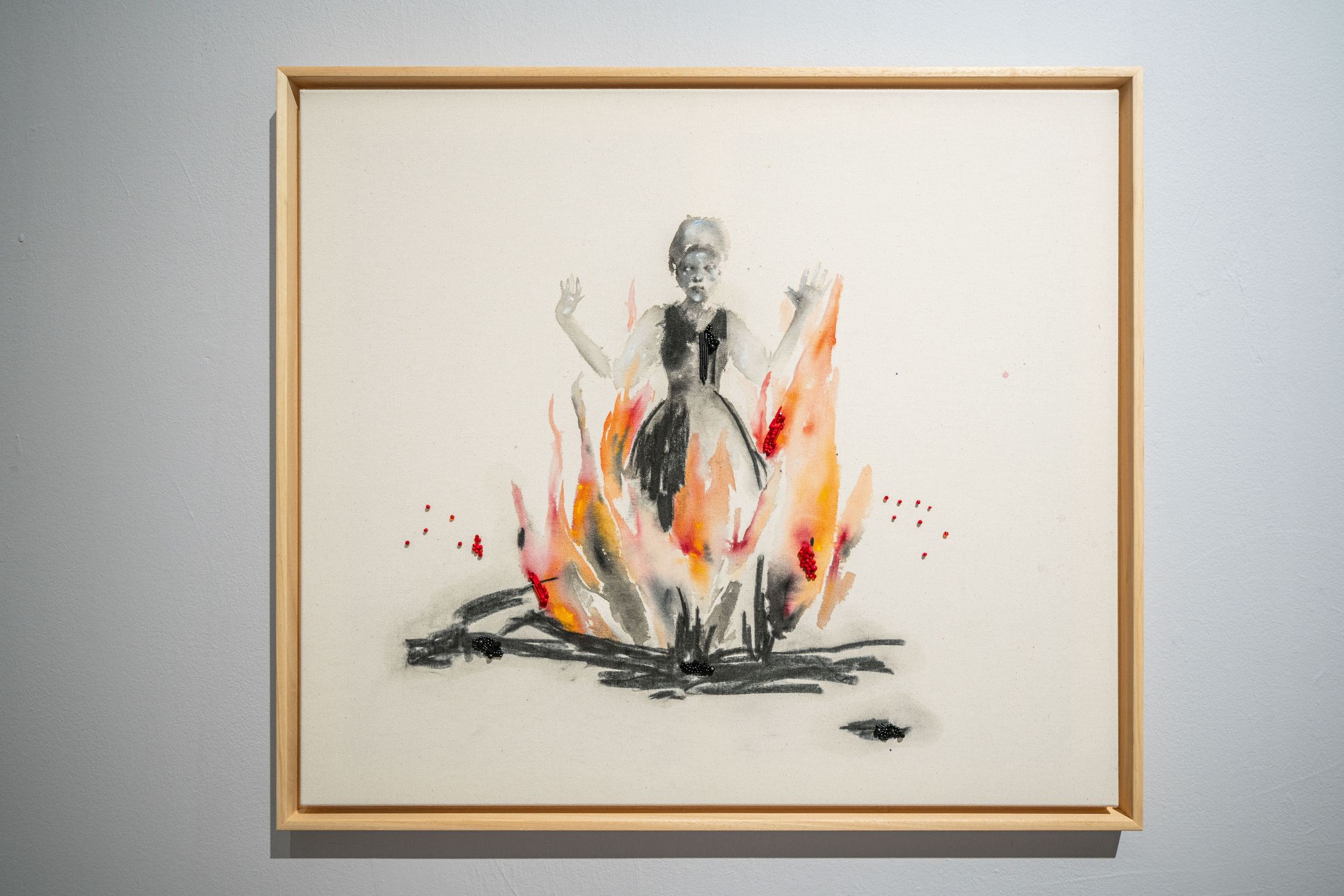


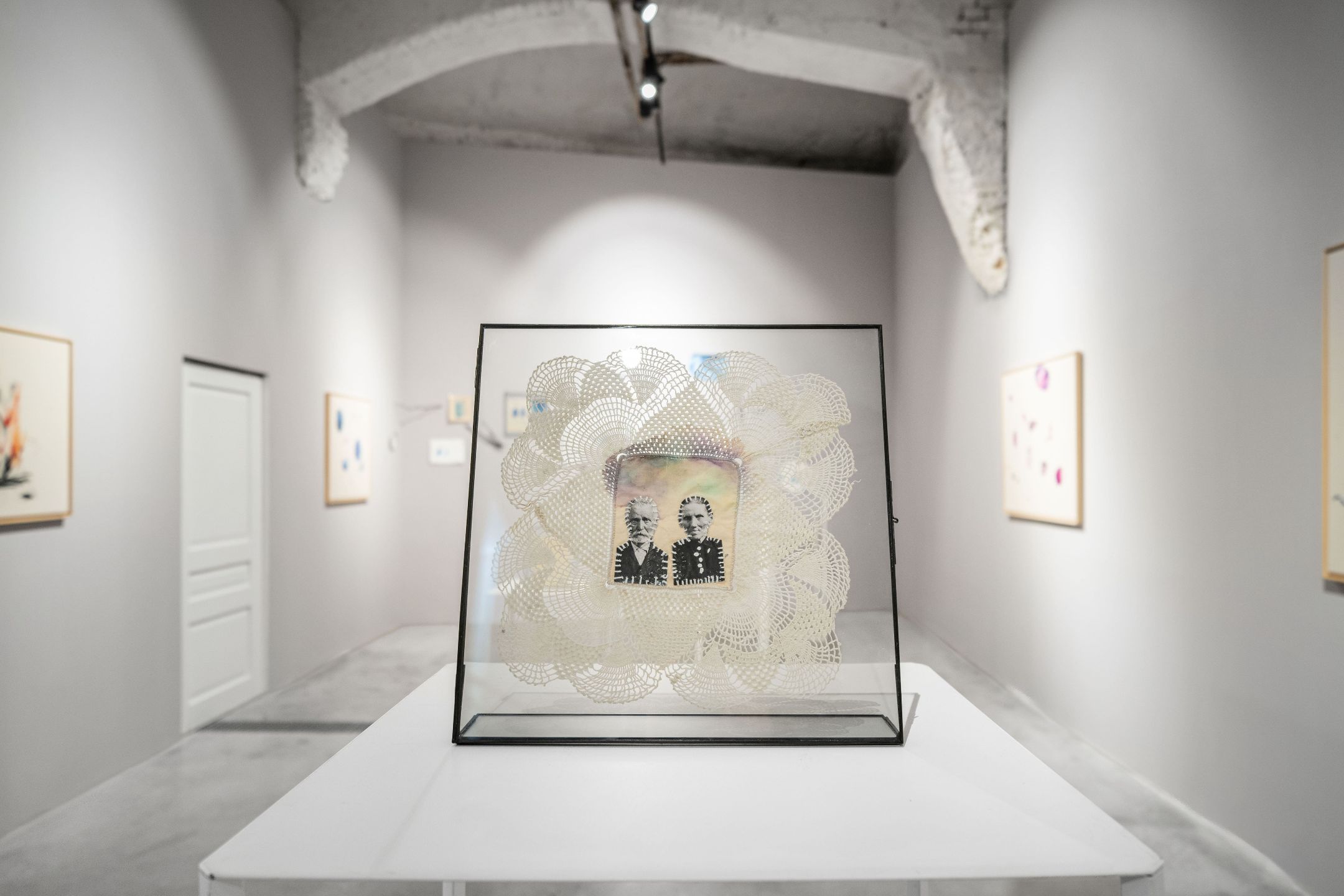
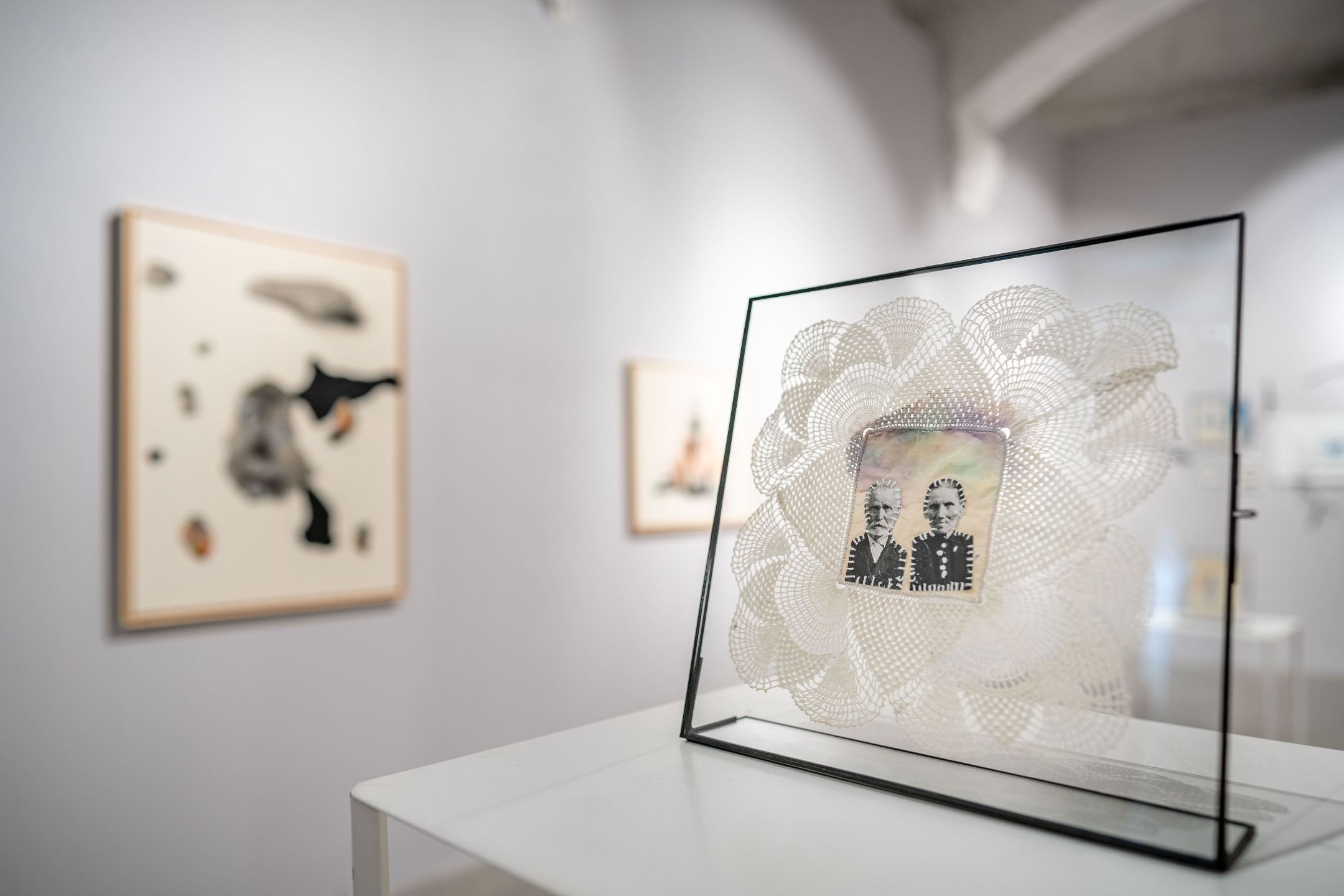
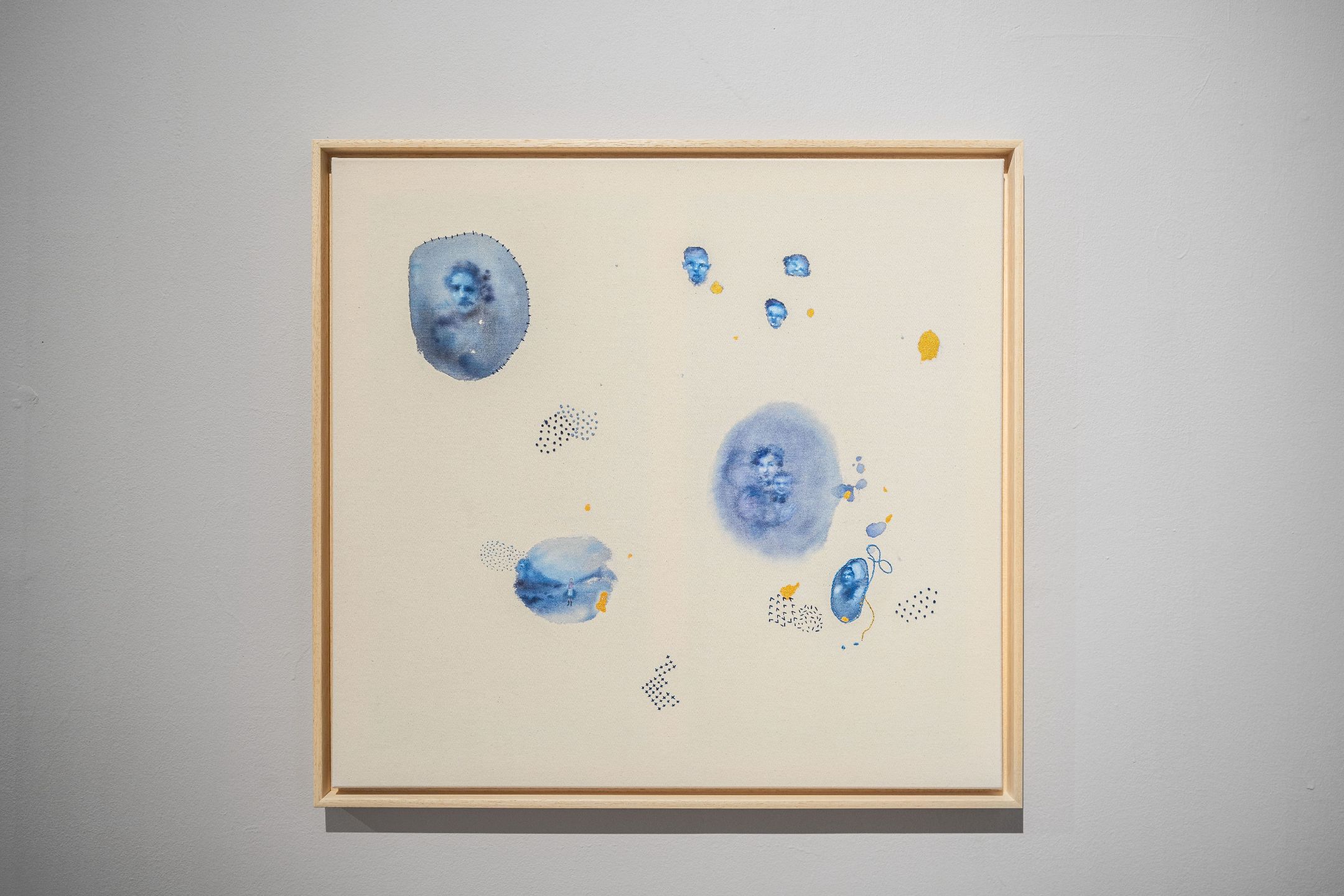
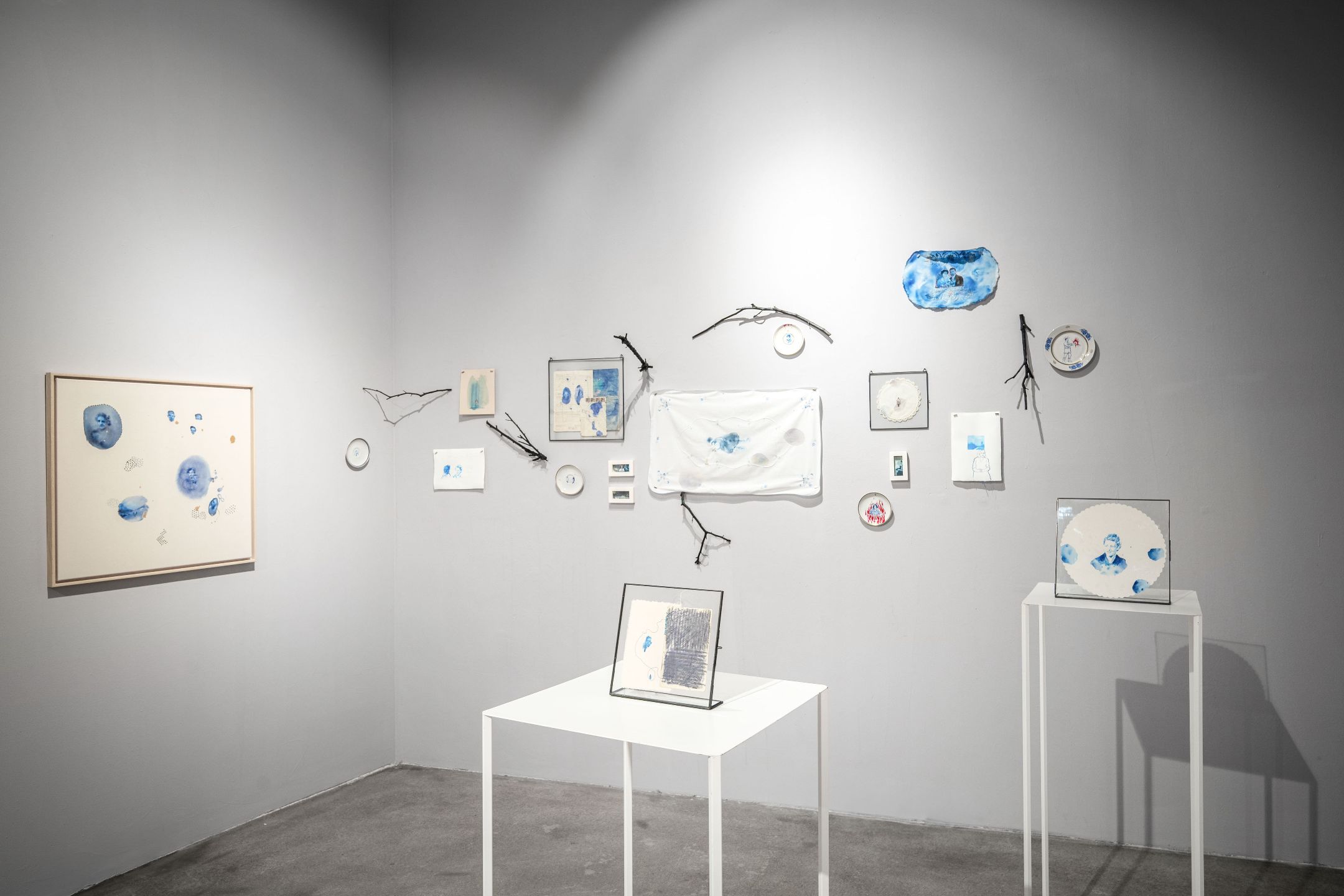
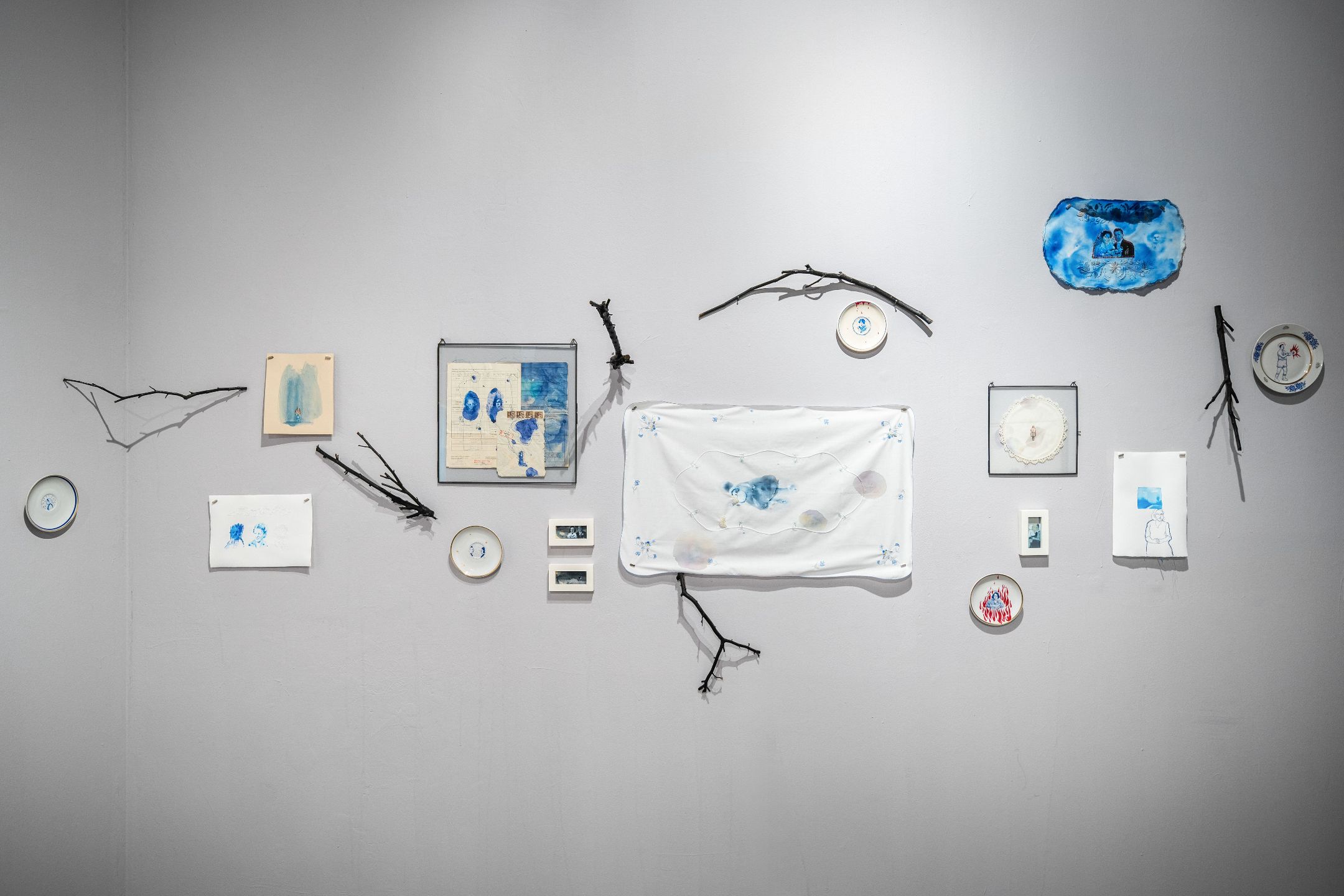

.jpg)
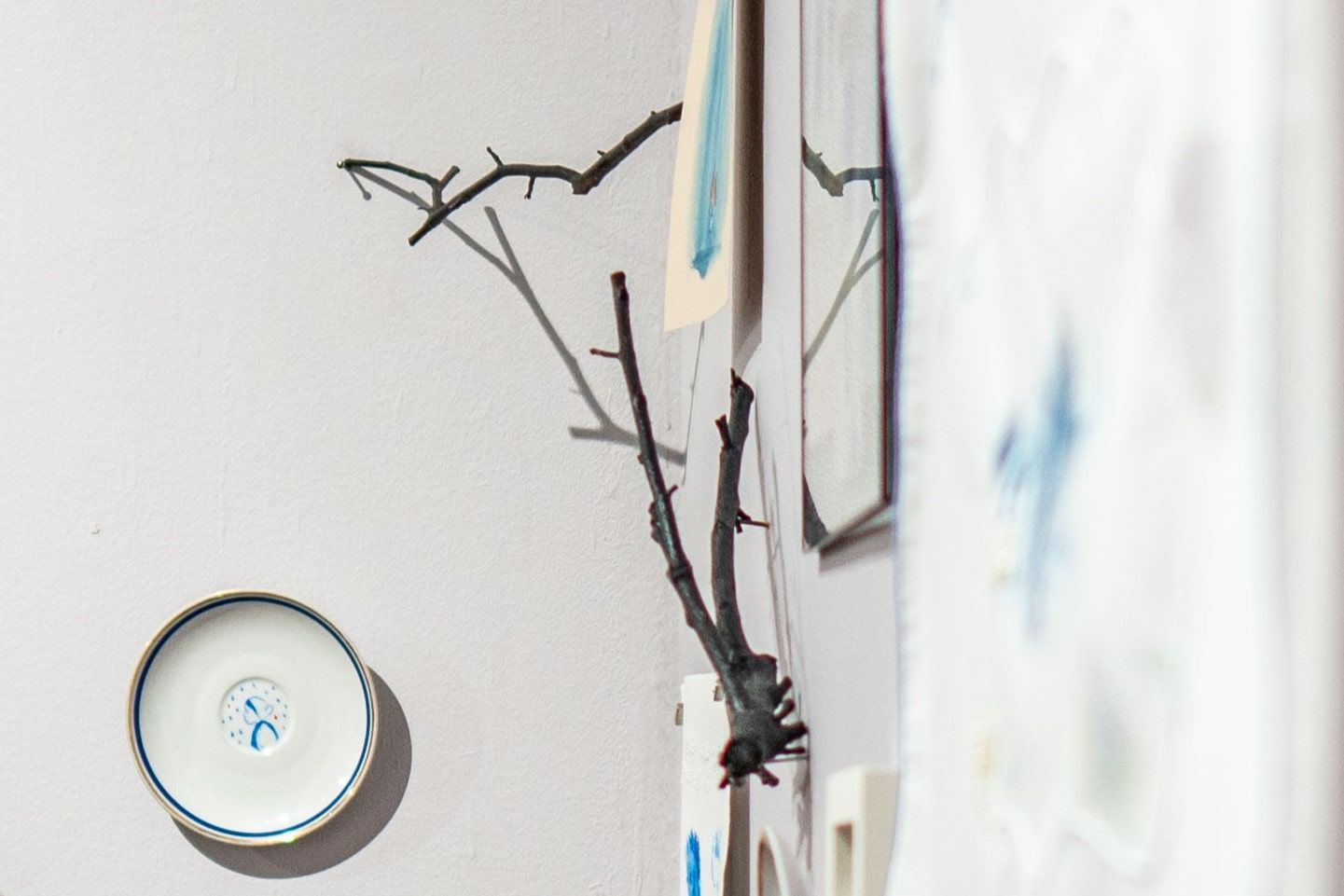
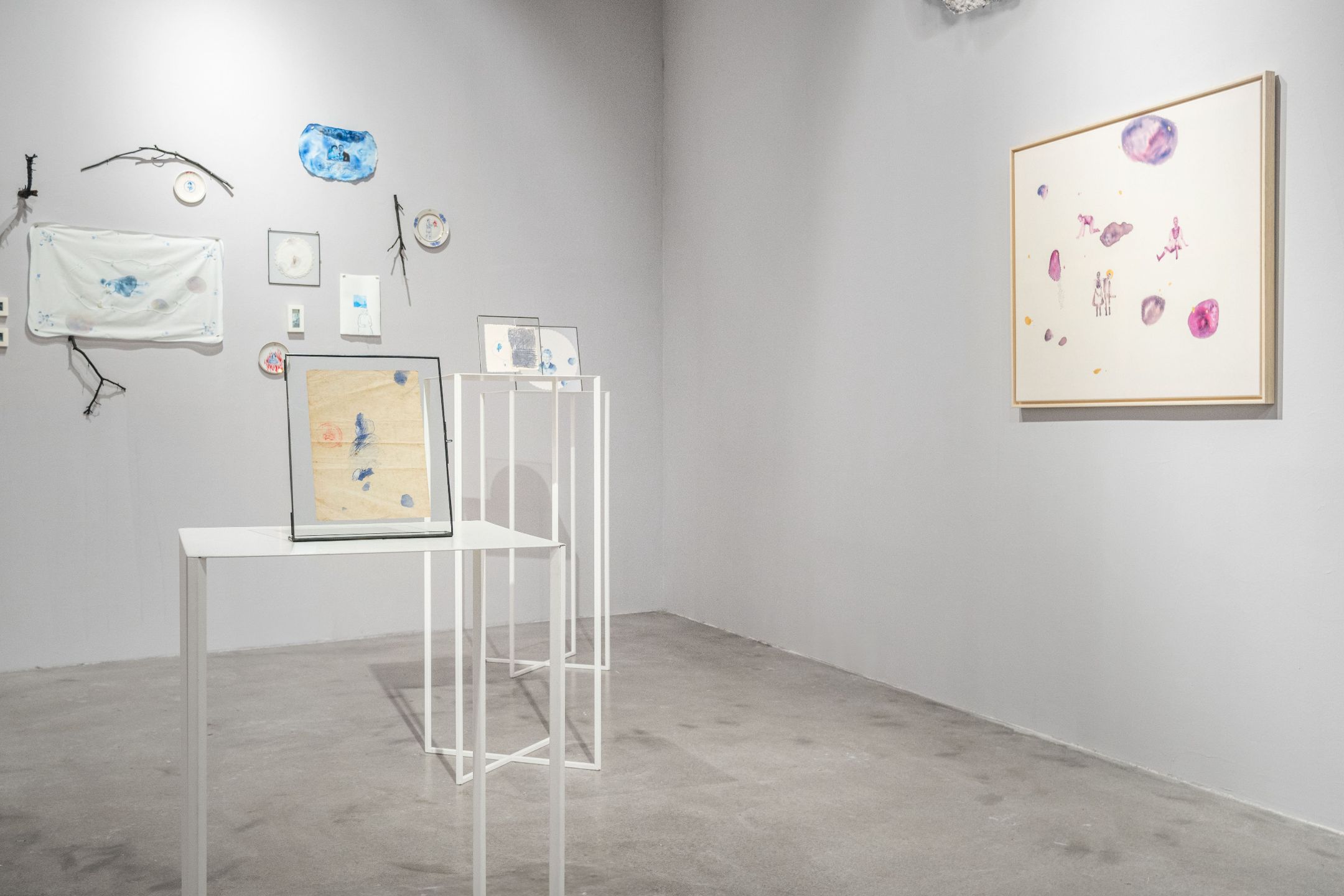

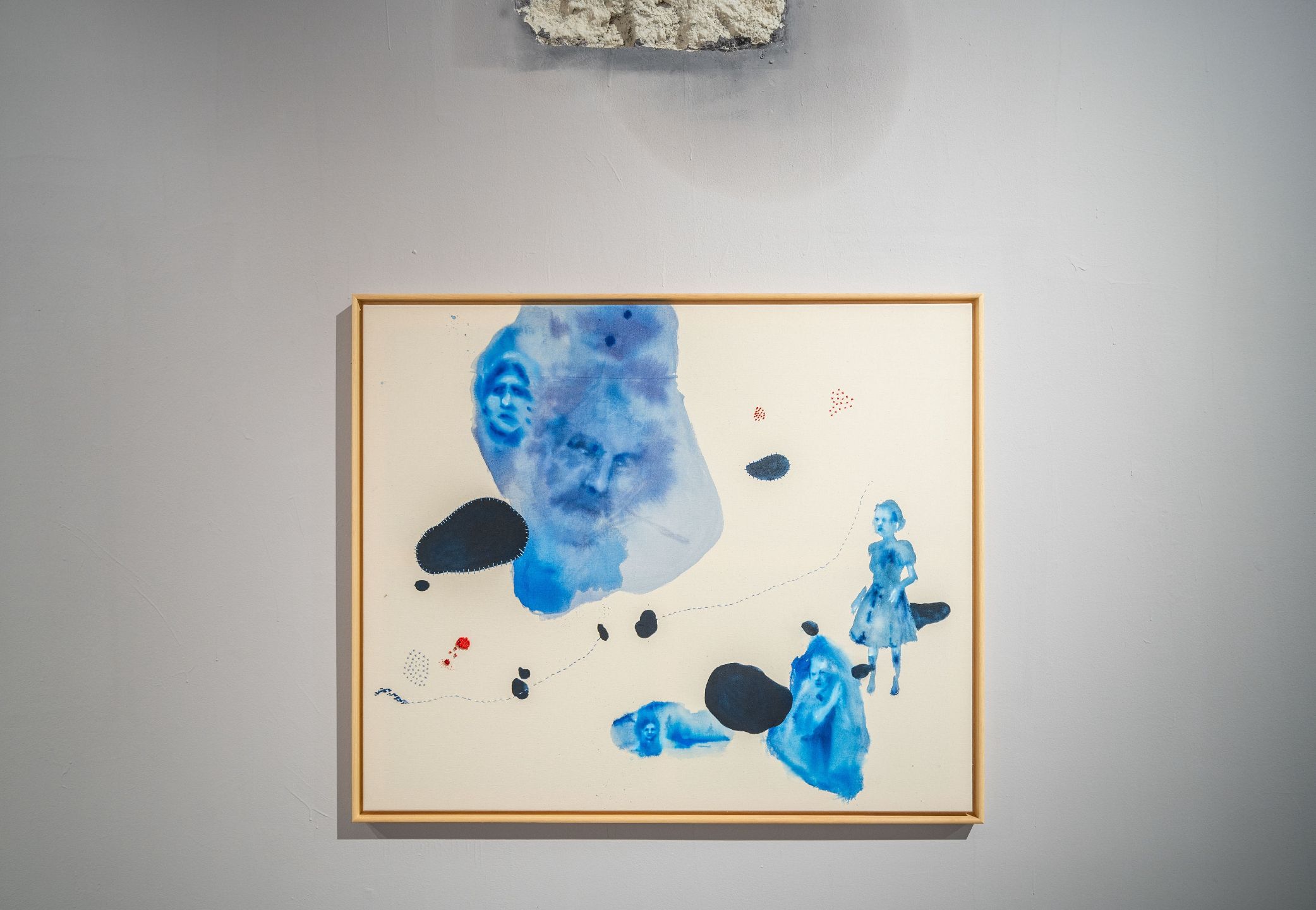
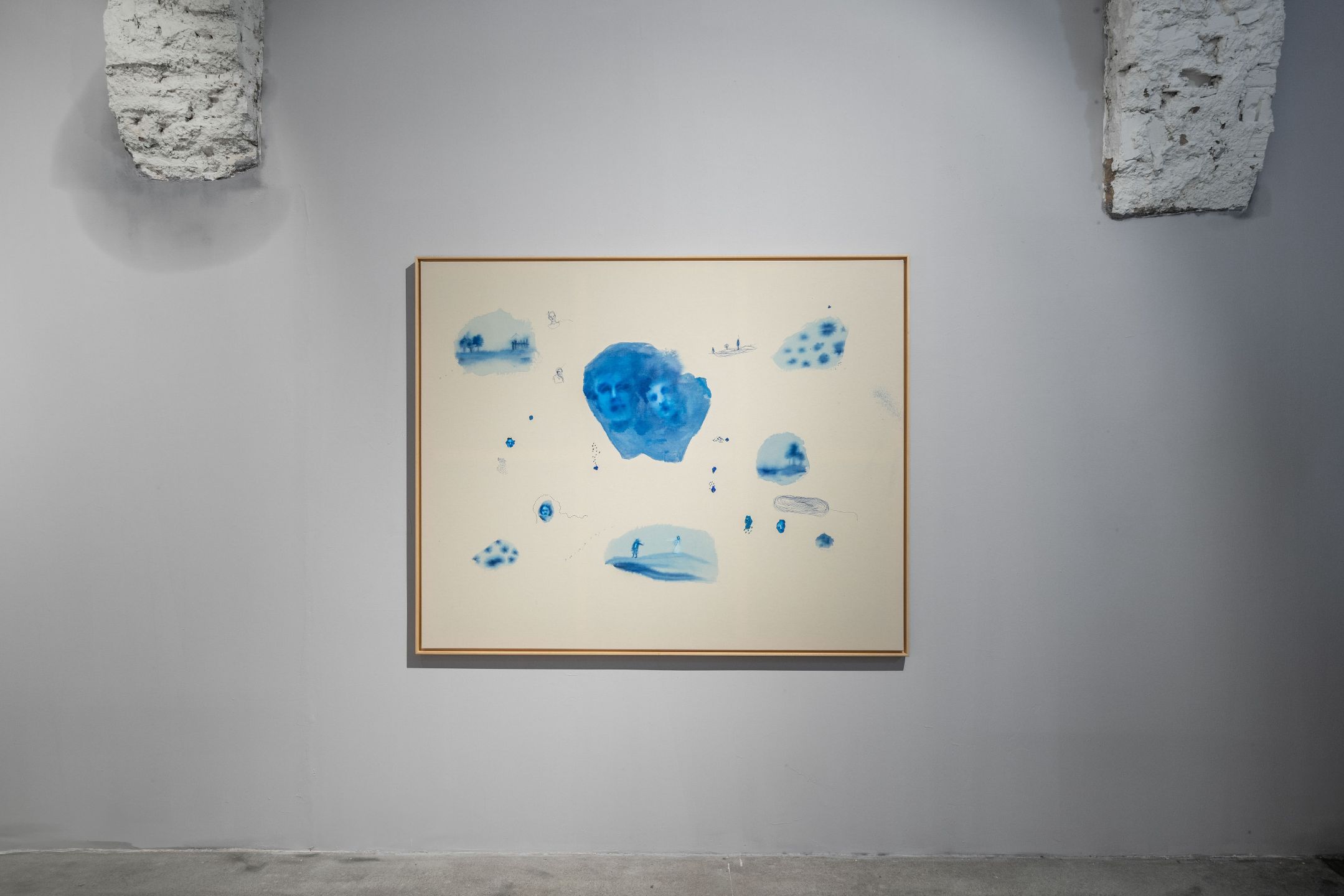
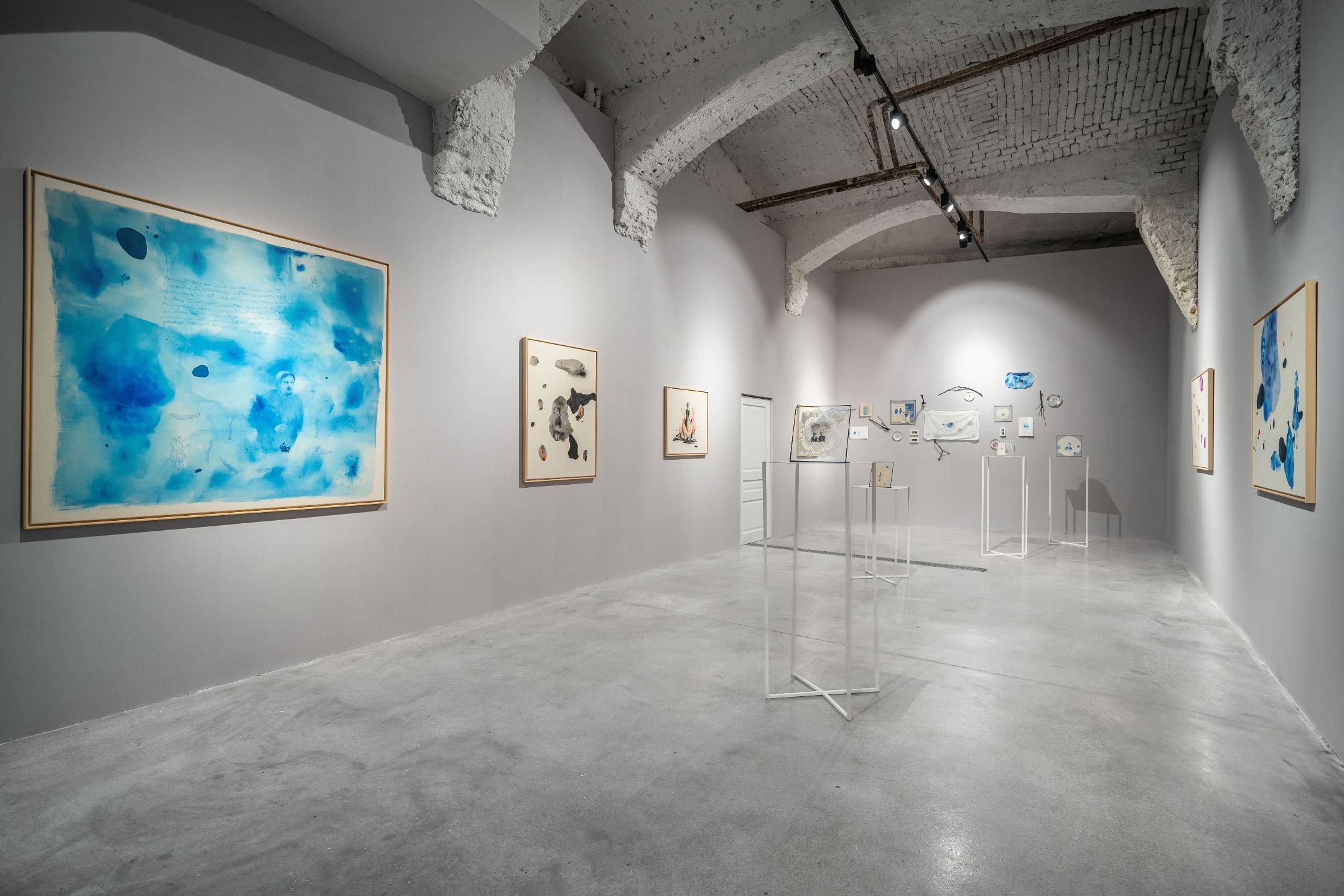
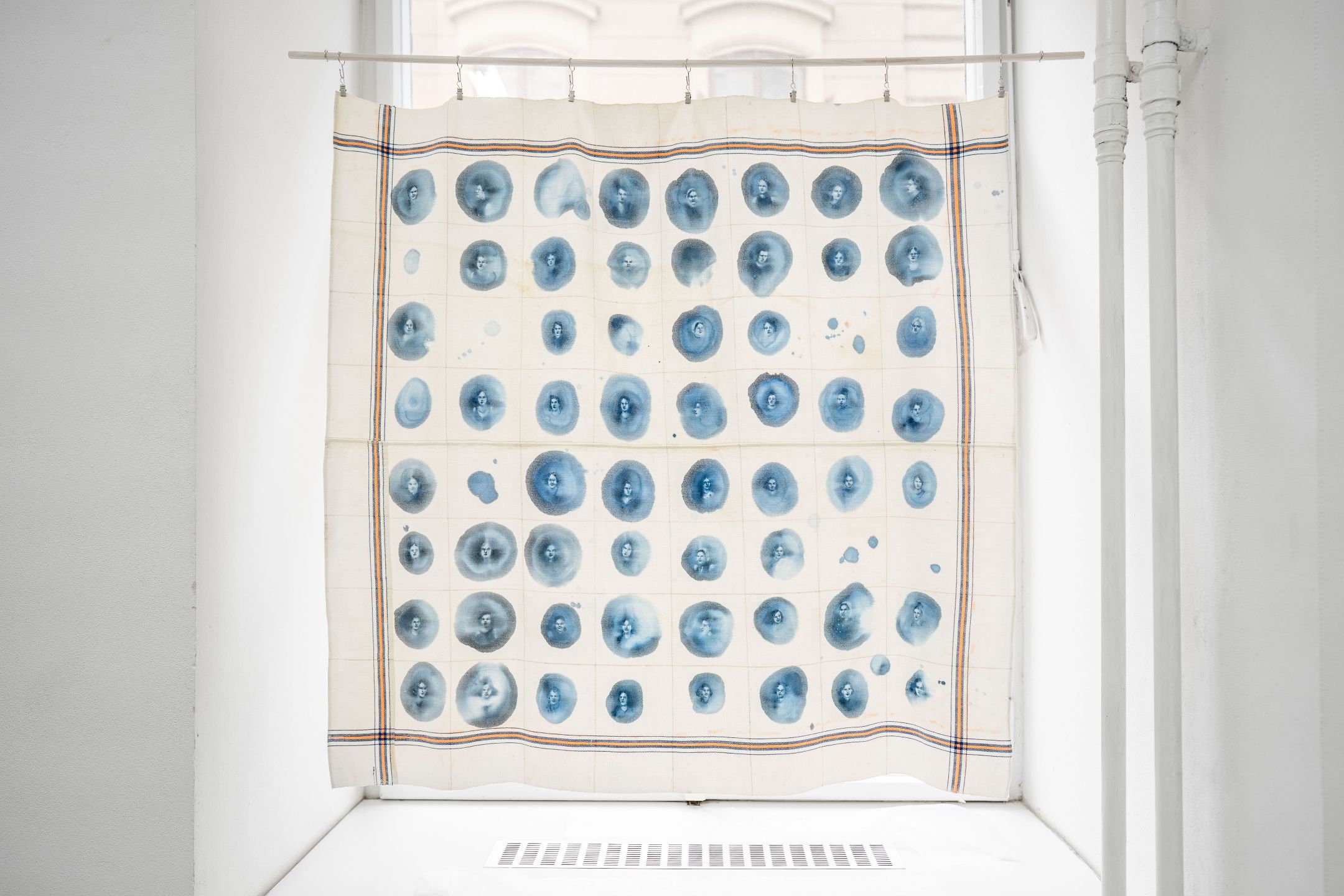

Ivana Šáteková
Crane Woman in the Fur
“The mind is clear. Psychomotor pace and dynamics are slightly inhibited. Orientation by place, time, person, and situation is adequate. No illusions or hallucinations are detected in perception. Thinking is slowed, coherent, without delusional productions, with a rational basis. Judgment is cathartic. Chronology of alcoholic history is triggered. Interest spheres are impoverished, not focused on laziness. The interest sphere is closed, activity is without major fluctuations. Affect is adequate to the situation, and affectivity is flat and more explosive. Tendencies to explosiveness are common. Intellectual equipment is adequate without florid psychotic symptomatology. Depressivity of personality is chronic, alcoholic, organic.” – Judr. Ján Vongrej, 13th May 1928
"The inspiration from my aunt's story remained, but it is primarily about the relationship between a man and a woman, about family traumas that are kept secret and not talked about." – Ivana Šáteková
In the event of a hit or bump, it is advisable to apply a cold or icy compress to the bruise. If you don't have a special compress on hand, you can also use frozen vegetables. Although bruises are not a beauty embellishment, in most cases they are not serious and will disappear within a few days without any consequences. This, however, does not apply to mental bruises at all.
The ability to act independently of determining factors and make decisions based on one’s own discretion is a concept linked with the idea of responsibility for one's actions and choices. Heuristics, an intuitive method that helps us quickly and efficiently solve problems and make decisions based on previous knowledge and ingrained experiences, seems to be a useful method. However, not all experiences are conscious, and it seems not all must be directly ours.
Traumatic experiences can be shared across generations and societies, leading to deeply rooted maladaptive patterns. In Ivana Šáteková's exhibition, internal bruises – mistakes – resembling ink stains that arise unexpectedly and can significantly color our lives become reminders of the unpredictable consequences of our decisions.
In her work, Šáteková predominantly addresses negative or little-reflected issues present in Slovak society. Over the years, she has dealt with questions of sexism, misogyny, racism, fascism, and xenophobia. At the exhibition in Karpuchina Gallery, through the discussion of her own family history, she offers viewers an opportunity for introspection and reflection on the origins and consequences of hidden injuries.
The artist continually works with overlaps into the past, folk, or popular culture and searches for the most suitable means to effectively express her critical stance. By combining functional objects such as plates, tablecloths, and purely artistic works – canvases – she illustrates the connection between art and everyday life, as well as the dialogue between the past and the present.
For Ivana, the story is crucial, creating short but straightforward narratives that determine the preferred format of the work. Miniature paintings and drawings are her own because each stands behind one "small" story of an individual. These are grouped and connected in space into larger contexts and events. Together with the anonymity of the protagonists, they allow us to identify with the universal emotions they bring. Their pattern suggests order and structure, while the details of the faces point to the uniqueness of each individual. The compositional positioning of her figures in the middle of abstract stains – bruises – evokes possible isolation or understanding of the outer world through the inner one.
Ivana Šáteková, born in 1984, lives and works in Bratislava. She studied Puppetry at the Academy of Performing Arts and later completed her studies at the Academy of Fine Arts and Design in the + XXL studio under Prof. Daniel Fischer. In 2013, she became a finalist for the Essl Art Award, and in 2014, she received the Tatra banka Foundation Award. Her work uses painting and drawing inspired by comics and photographs found in books or on the internet, but she also works with other media (embroidery, object, interactive installation). Her work is characterized by uncompromising humor, irony, and insight, reacting to current social issues. She combines history, folklore, and folk traditions with the contemporary world, based on which she comments on the deeply rooted paradoxes and absurdities of not only Slovak society.